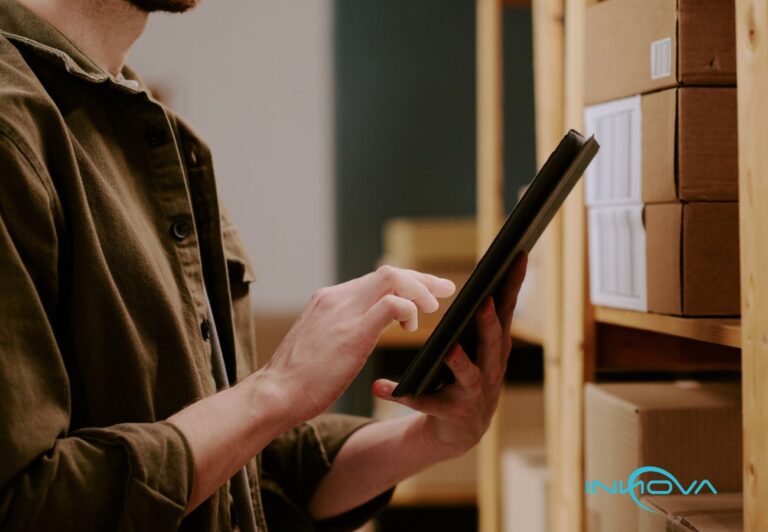In industries such as Oil & Gas, mining, construction, and agribusiness, field operations are continuous and heavily reliant on materials and spare parts managed by third-party teams. However, creating material reservations and goods issuing in SAP, using transactions like MB21 and MIGO, is not designed to control and support agile, on-site processes—especially when working with external contractors.
This article examines the challenges involved in material management across these industries, such as the lack of mobility, control, and traceability, and introduces innovative solutions that enhance the creation and management of reservations in SAP, thereby improving operational efficiency and real-time control.
Common Issues in Creating Material Reservations in SAP Across Field-Based Industries
In field-intensive sectors like Oil & Gas, mining, construction, and agribusiness, issues in creating material reservations in SAP typically stem from two key factors: ongoing field operations and reliance on outsourced services or external contractors. These third-party teams—ranging from maintenance providers to subcontracted construction firms—operate far from corporate offices and require immediate access to materials as needs arise on-site.
The core challenge lies in managing the request, approve and delivery of these materials efficiently through SAP. In practice, requests are often submitted via phone calls, text messages, or paper forms sent to the central warehouse, leading to delays, transcription errors, and a lack of traceability. Furthermore, many contractors lack direct access to SAP, and even when they do, standard transactions (such as MB21 for reservation creation or MIGO for consumption posting) are not designed for field use or mobile devices.
This presents a significant obstacle to effective material reservation management in SAP and highlights the need for a more agile solution tailored to the realities of field operations and third-party collaboration. The following sections outline the shortcomings of the current model and propose viable solutions.

Challenges in Managing and Creating Material Reservations with Standard SAP
The standard SAP approach to material reservations presents several limitations in field operation contexts, including:
- Usability issues and lack of mobility: In SAP, reservations are created using transaction MB21 and material consumption is recorded with MIGO. These interfaces are complex and not user-friendly for non-experts, and they are not optimized for mobile devices. A contractor in the field is unlikely to be able to navigate SAP screens from a phone or tablet. In practice, field personnel jot down their requests on paper or communicate them by phone to the warehouse, where an internal employee enters the reservation into SAP or issues the material. This manual process causes delays and increases the risk of transcription errors, and often results in outdated stock and availability data within SAP.
- Lack of control, approval, and traceability: Standard SAP does not provide an approval workflow for reservation creation—any authorized user can generate a reservation without prior validation. This results in limited oversight, enabling the allocation of critical or high-cost materials without formal supervision. Additionally, reservation documents cannot capture contextual information or evidence: SAP often fails to accurately track who initiated the request (as internal users frequently submit them on behalf of contractors), and there is no support for attachments like photos or justifications. The only physical record is usually a signed paper slip filed outside the system. If a reservation goes unused, the stock remains blocked until it is manually canceled, affecting availability for other requests. Moreover, the lack of proper records makes it difficult to audit who requested and approved the reservations, who collected the material, for what purpose, and in what condition—posing risks of inventory misuse and complicating the resolution of discrepancies.
The Ideal SAP Reservation Solution: What Should the System Include?
To overcome these limitations, an effective solution should incorporate the following features:
- Easy reservation creation from the field: Enable field personnel—including authorized contractors—to create SAP material reservations easily from mobile devices.
- Simple, user-friendly interface: Allow users to select materials by code, description, or scanning, and to input quantity and destination (e.g., work order or project) without relying on paper forms or SAP GUI via a desktop. This enables real-time requests directly from the field.
- Online notifications and approval workflows: For critical materials or high-volume requests, the system should trigger immediate alerts to the designated supervisor, who can approve or reject the reservation directly from their mobile device. This ensures control without delays.
- Barcode and QR code integration: To enhance speed and accuracy, the solution should support barcode or QR scanning for both materials and reservations documents—eliminating manual data entry and reducing errors for requesters and warehouse operators.
- Full digital traceability: Every transaction should be digitally supported, including photos (e.g., of damaged parts or delivered items), digital signatures from contractors upon receipt, and geolocation records at the point of delivery. This enables a fully auditable and paperless process.
Top Solutions for Managing Material Reservations with Third Parties in SAP
If you’re looking to streamline the process of creating and managing material reservations in SAP, the following three solutions developed by Innova—SiMA, SiLI, and SiPM—offer full integration with SAP. These tools are designed to enhance mobility, traceability, control, and approval throughout the entire reservation process, making them ideal for operations involving contractors and field teams.
SiMA – Mobility and Traceability for Warehouse Movements
SiMA (Warehouse Movement System) is a web and mobile solution focused on facilitating fully digital management of material reservations and deliveries. It allows users to create reservations, view pending items, and record goods issues directly from a mobile device—without waiting for a desktop access to SAP GUI.
Key advantages for SAP reservation management:
- Full real-time visibility of warehouse operations, eliminating delays and errors from manual processes.
- User-friendly, mobile-optimized interface designed for field use, allowing staff to record movements efficiently without needing a desktop.
- Fully digital workflow: attach photos, capture digital signatures from recipients, and eliminate paper documentation.
- Barcode and QR code scanning to ensure accurate material identification during goods receipt, transfers and goods issues reduce manual entry errors, and preserve data integrity in SAP.
SiLI – Smart Approvals for Manual Reservations
SiLI introduces an intelligent approval layer to SAP, enabling material reservation requests to be reviewed and approved before being processed. This is particularly useful in scenarios where standard SAP lacks an approval workflow. SiLI automates the approval process based on predefined criteria such as material type, value, or assignments (e.g., cost center).
Key advantages for SAP reservation management:
- Strengthened inventory management in SAP and prevention of unauthorized or erroneous material consumption.
- Real-time mobile approvals: supervisors receive notifications and can approve requests directly from their devices, avoiding operational delays.
- Comprehensive audit trail: every approval or rejection is logged with user and timestamp, ensuring full traceability for future audits.
SiPM – Mobile Maintenance with Field-Based Spare Parts Management
SiPM (Smart Plant Maintenance) is tailored for maintenance technicians who need to manage work orders and associated material reservations from the field. The solution enables users to view, release and confirm work orders and register material consumption—all from a mobile device, fully synchronized with SAP in real time.
Key advantages for SAP reservation management:
- Transparent and efficient maintenance cycle—from issue detection to delivery and consumption of spare parts.
- Immediate generation of new reservations when additional materials are needed beyond the initial plan, avoiding delays.
- Full digital traceability: each transaction can include photos or any attachment needed.
- Real-time synchronization with SAP ensures that reservations and work orders are always current and accessible from any location.
- External file storage: While supports and photographs remain linked to SAP orders, the actual files can be stored in SharePoint, Google Cloud, or AWS S3—helping keep the SAP database clean and optimized.















